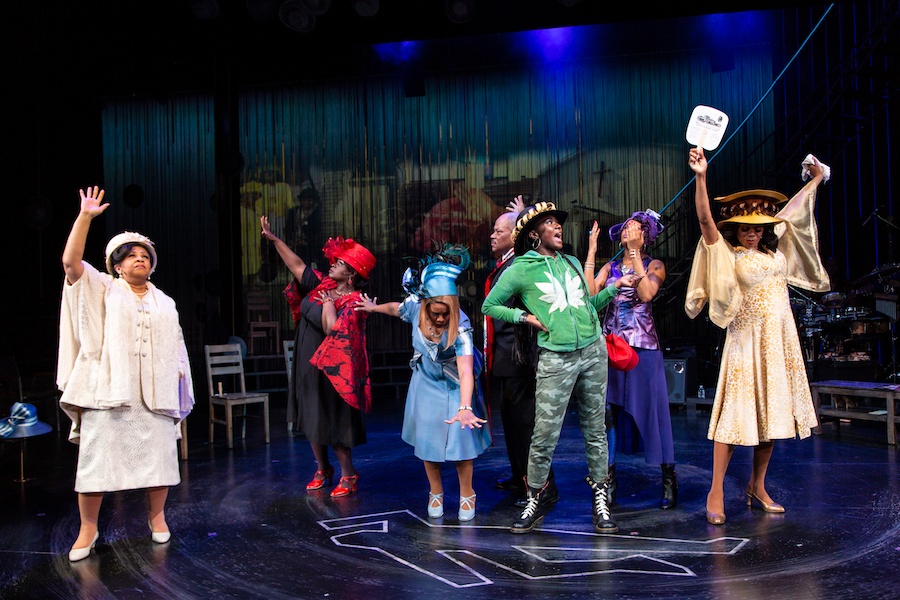
Babz Rawls-Ivy | Long Wharf Theatre | Music | Religion & Spirituality | Arts & Culture | New Haven | Theater
 The cast of Crowns. In an interview with the Arts Paper and the Inner City News earlier this year, playwright Regina Taylor said of the work: "I do find this piece defiant. I do find this piece political. You have an African-American woman at the center of it, and she is being questioned. I see myself as being questioned from the moment that I took my first breath. Sometimes just being is a statement of defiance. Being in this mind and being in this body. Where you stand ... it is a defiant act to breathe, to be, to have your own mind. It is political. " T. Charles Erickson Photo.
The cast of Crowns. In an interview with the Arts Paper and the Inner City News earlier this year, playwright Regina Taylor said of the work: "I do find this piece defiant. I do find this piece political. You have an African-American woman at the center of it, and she is being questioned. I see myself as being questioned from the moment that I took my first breath. Sometimes just being is a statement of defiance. Being in this mind and being in this body. Where you stand ... it is a defiant act to breathe, to be, to have your own mind. It is political. " T. Charles Erickson Photo.
When four embellished hats descended from the ceiling of Long Wharf Theatre last month, Babz Rawls-Ivy wasn’t just thinking about the music that was swelling around her. Or about the high heels that stomped as their owners took the hats from their hooks, and paraded around the stage. Or how the songs woke up something deep in her bones.
All of those things entered her mind. But mostly, she was thinking of Eva C. Taylor—her maternal grandmother—and how bringing that woman’s memory to the Long Wharf stage was a revolutionary act.
Rawls-Ivy is editor of the Inner-City News CT, the city’s only Black newspaper. The hats are part of Crowns, a gospel musical at Long Wharf Theatre that enters its final stretch this week, and features a cast that has six women (and one man) of color on a stage that hasn't been known for its diversity. Recently the two came together as Rawls-Ivy took a seat in the audience, opened her playbill to the first page, and found a meditation on Black joy, religion, and redemption.
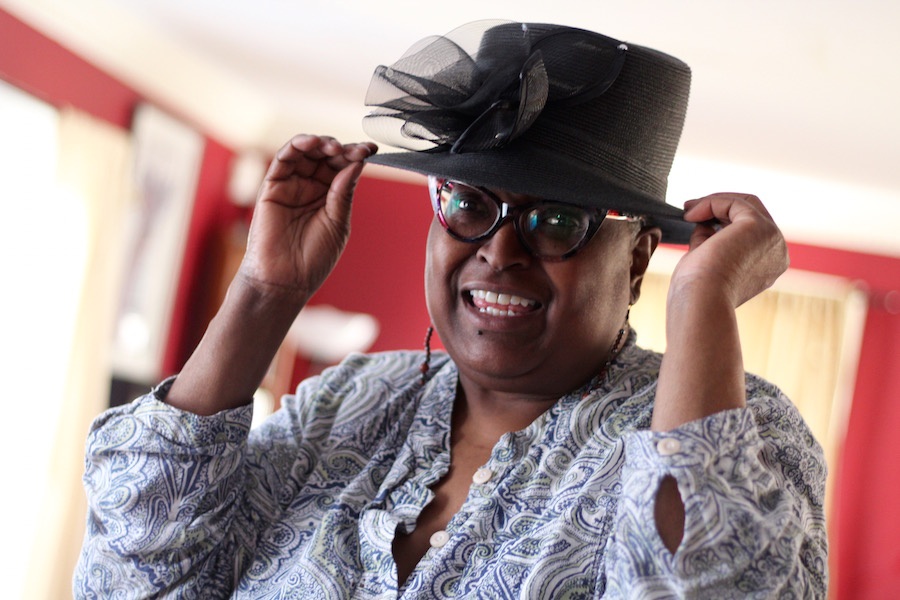
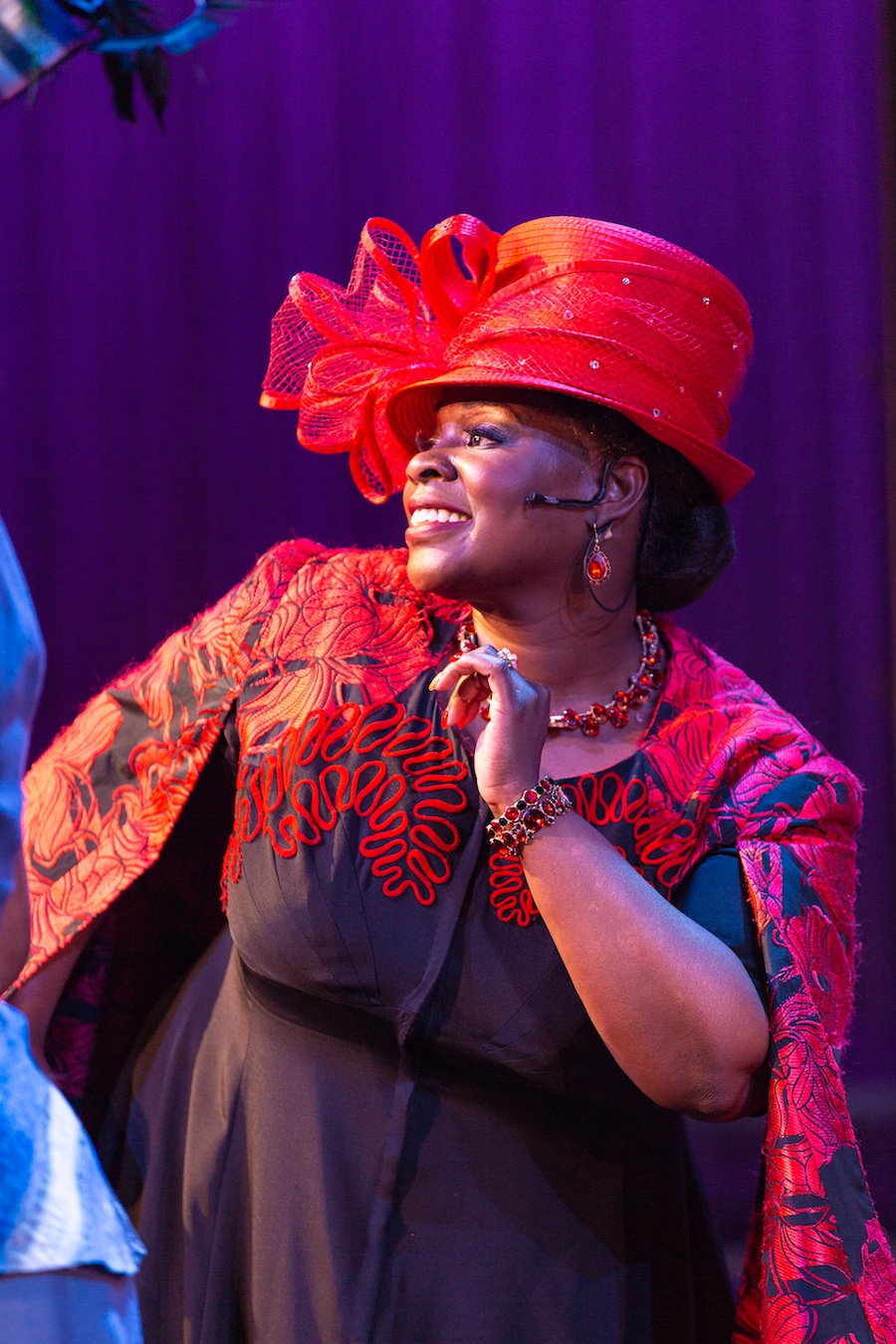
Written and directed by playwright Regina Taylor, Crowns tells the story of Yolanda, a 17-year-old teenager who is sent to South Carolina after her brother is shot and killed in their hometown of Chicago. From the moment she learns about the journey, she is a skeptic, unsure of what there is to learn among old biddies with their church hats, full-bellied spirituals and sun-soaked Sunday services.
In Yolanda's eyes, their hats are a punchline or a stereotype, no match for her baseball cap and penchant for sleeping in—but also for the immense emotional pain that she is in after her brother's death. As large, bright words appear on a scrim behind her, she shares her disinterest and doubt with the audience in verse, a sort of conversation piece to the gospel in the show. Until one day those beliefs are tempered—and she starts to see her legacy through song and the women who carry it.
It is a conversion story for which the live soundtrack doubles as plot, and there is no plot without that soundtrack. On Long Wharf’s stage, the work springs fully, vividly to life, characters moving rhapsodically as they belt “Run and Tell That,” “His Eye On The Sparrow” and propulsive, original music. On the side of the stage, percussionist David Pleasant loses his body entirely to the music, arms whipping back and forth as he reaches from one drum to another.
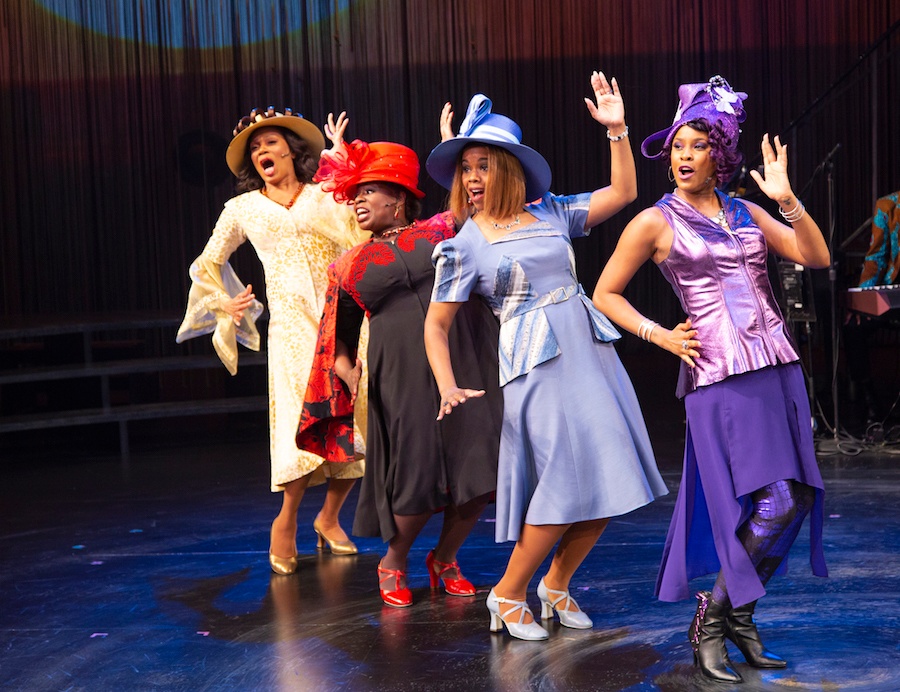 Stephanie Pope as Wanda, Danielle K. Thomas as Mabel, Rebecca Covington as Jeanette, and Latice Tenae Crawford as Velma. T. Charles Erickson Photo.
Stephanie Pope as Wanda, Danielle K. Thomas as Mabel, Rebecca Covington as Jeanette, and Latice Tenae Crawford as Velma. T. Charles Erickson Photo.
It’s a testament not just to resiliency of the human spirit, but the music that has literally held it up for centuries. And in their rows, audience members like Rawls-Ivy have found a story that they can crawl into, and call home.
“When the woman sang ‘His Eye on the Sparrow’…it really is the foundation of our faith,” she said on a recent Sunday at her home, tending to chili as she laid out her hat collection. “All I could do was sing ‘Hallelujah!’ I felt as if I was in my Pentecostal church (Ebenezer Baptist Church on Columbus Avenue) as a child. I’m not Pentecostal now … but the music just took me right back to my roots. I had tears in my eyes when she sang that song. To hear that—it just roused me in a way that I hadn’t been roused in a very long time.”
"The white people turned around because we were singing,” she added. “They didn't hush us. But they were like: How did you know this?
Rawls-Ivy has been with Crowns since the beginning, when it premiered in New York City in 2002. Back then, Taylor had been moved to write the musical when Director Emily Mann contacted her about Michael Cunningham and Craig Marberry’s year 2000 publication Crowns: Portraits of Black Women in Church Hats.
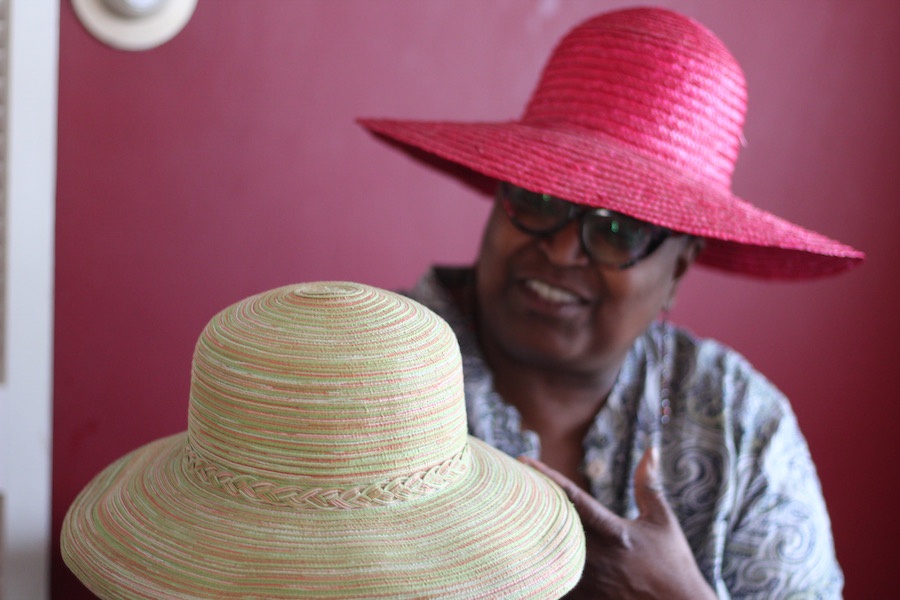 Babz Rawls-Ivy: "All I could do was sing ‘Hallelujah!’ I felt as if I was in my Pentecostal church (Ebenezer Baptist Church on Columbus Avenue) as a child." Lucy Gellman Photo.
Babz Rawls-Ivy: "All I could do was sing ‘Hallelujah!’ I felt as if I was in my Pentecostal church (Ebenezer Baptist Church on Columbus Avenue) as a child." Lucy Gellman Photo.
At the time, Mann said she knew she wasn’t the right person for the job; Taylor, who saw her family reflected in the book, was. In 2002, she released the first iteration of the play, itself a sort of gospel that grew legs, and began to dance in once-hatless theaters across the country.
Then a few years ago, Mann asked Taylor if she wanted to do a revival. The time seemed right to reorient the play to Yolanda’s perspective—a sort of ceremonial handoff to a younger generation, that was still grappling with old systems of oppression.
“Trying to open a widow into Yolanda’s mind has been part of this mission that I’m on to reconnect with our youth,” Taylor said in an interview with the Arts Paper and Inner City earlier this year. “We need to reclaim our youth. Unfortunately, it’s as timely as it was 15 years ago … I’m saddened by that fact that it is so current, so present in the world that we live in right now.”
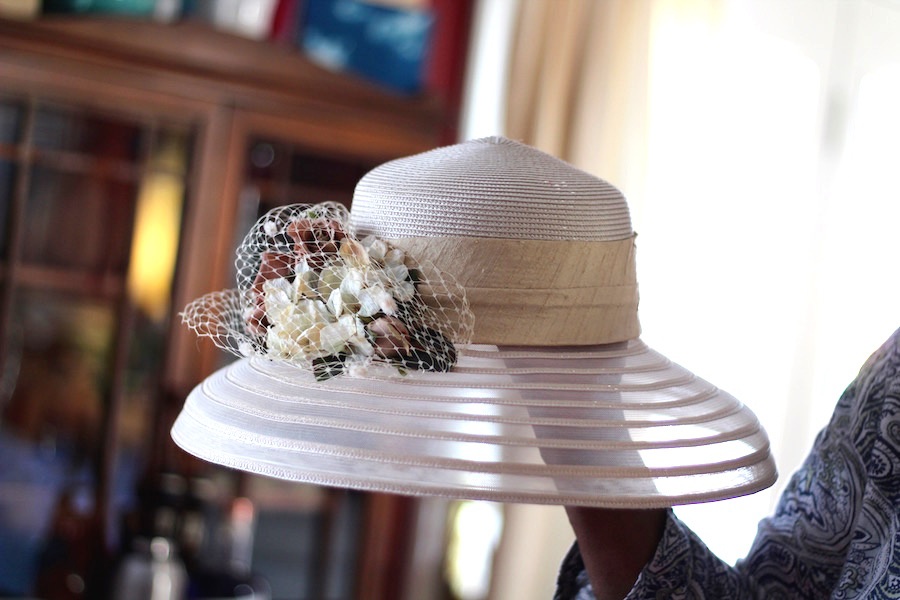 Rawls-Ivy later reflected on the role of race in the show, and how important it is to her to see that many Black women on the Long Wharf stage. "I’m not sure that white people can understand this play, because it is very rooted in the Black church," she said. "Whether you are COGIC (Church Of God In Christ), or Pentecostal, or Baptist—you know something about this play.
Rawls-Ivy later reflected on the role of race in the show, and how important it is to her to see that many Black women on the Long Wharf stage. "I’m not sure that white people can understand this play, because it is very rooted in the Black church," she said. "Whether you are COGIC (Church Of God In Christ), or Pentecostal, or Baptist—you know something about this play.
“I see lots of Yolandas walking around in my life,” she added. “It’s right in front of me, this despair. But the thing about those hats is that they hold so many stories. Histories cupped under the brim. These women—they baptize her [Yolanda] in her history.”
It's a message, political and defiant as it puts women of color front and center to tell their stories, that resonates with Rawls-Ivy. 20 years ago, she began her hat collection to pay homage to her grandmother, a “beautiful, red-boned kind of women” who was matriarch of the family until she died at 75. During her life, she was a hat lady—she had her church hats, her “let loose” hats, her holiday hats and her fall hats, including a fox stole with eyes that stared out from her shoulder.
She wore a hat every day of her life, Rawls-Ivy recalled, with gloves and suits, and a traveling trunk and stationary box for letter-writing. A tall, commanding woman, she could rock a wide brim and a fitted design alike. The crown of crowns was a black, wide-brimmed hat that was gray and white on the top, with a tall feather and a brooch.
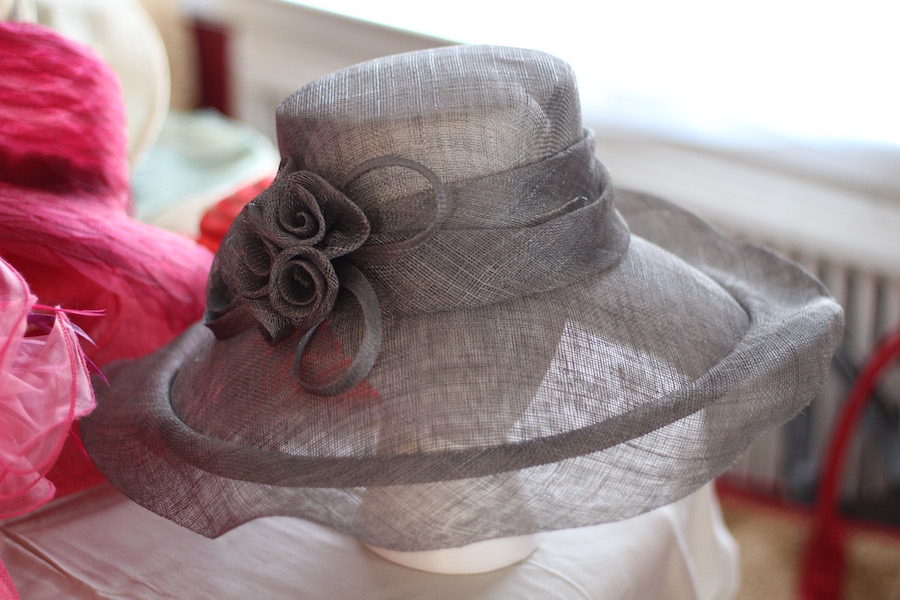
“Black women of that age—you just didn't go to church with a bare head,” Rawls-Ivy said on a recent Sunday, pulling out her collection of 30 church hats. “A Black woman’s worth and wellness was tied to the affordability of a hat. You could tell a women of measure or means by a hat. But every woman, despite her economic status, had a hat. So a hat was an equalizer. It didn’t matter if it was fancy or not.”
Now, she wears hats each Sunday from Easter through June 21, the first day of summer. From a collection that started small, she now has decades to pull from.
There's a large, gray hat that she calls her “old-school Black woman hat,” that she has pulled out for weddings and festivals. A small but mighty and cacophonous collection of pink ones (“my favorite color!”) that she can take from church to the beach, and wear for an entire day. A Jackie Onassis hat, a blue-gray take on a pillbox with a brim.
And the most recent pièce de résistance: a “club hat” that she bought for this year’s Kentucky Derby, with polka dots, thick pink ribbon and sparkles. She said that it's not a tradition her two daughters follow, yet. But she's hoping they will in time.
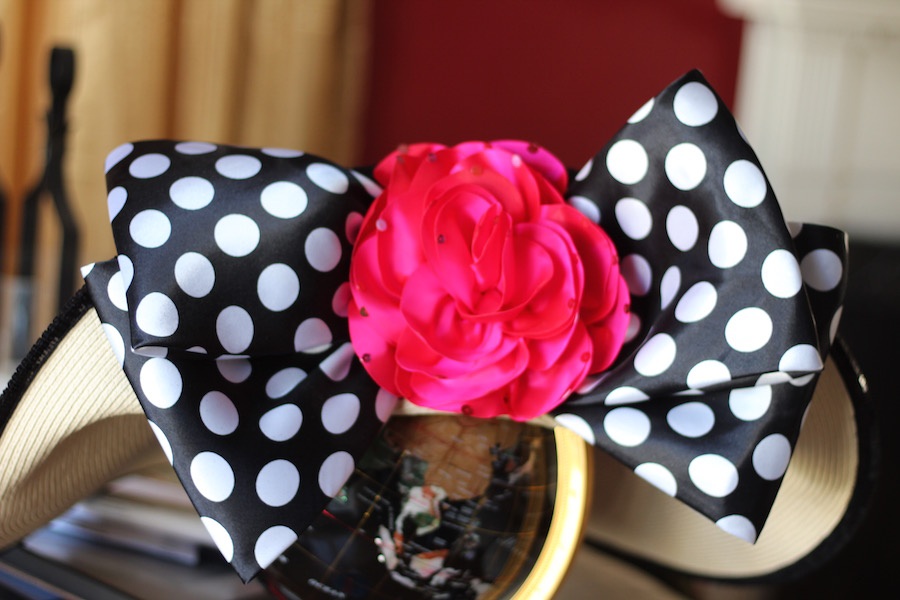
“I’m hoping that when I get a certain age, they will want to have a certain homage to me,” she said, a grin spreading across her face. “If I can get them to wear a hat when I’m 80.”
Like the women in the show, she said that she sees it as a direct connection to history, a wide-brimmed bridge between past and present. Each time she dons one, Eva C. Taylor is there, looking on with approval.
“I feel very much close to her when I’m in my spring, Easter mode,” she added. “I really do feel connected to her and her legacy.”
“Every hat has its own story,” she added. “Different hats have different moods to them. And anybody can wear a hat.”
This piece is part of the Arts Paper's collaboration with The Inner City Newspaper. Rawls-Ivy contributed to the interview. To learn more about Crowns, which runs through May 13, check out Long Wharf Theatre's website.

